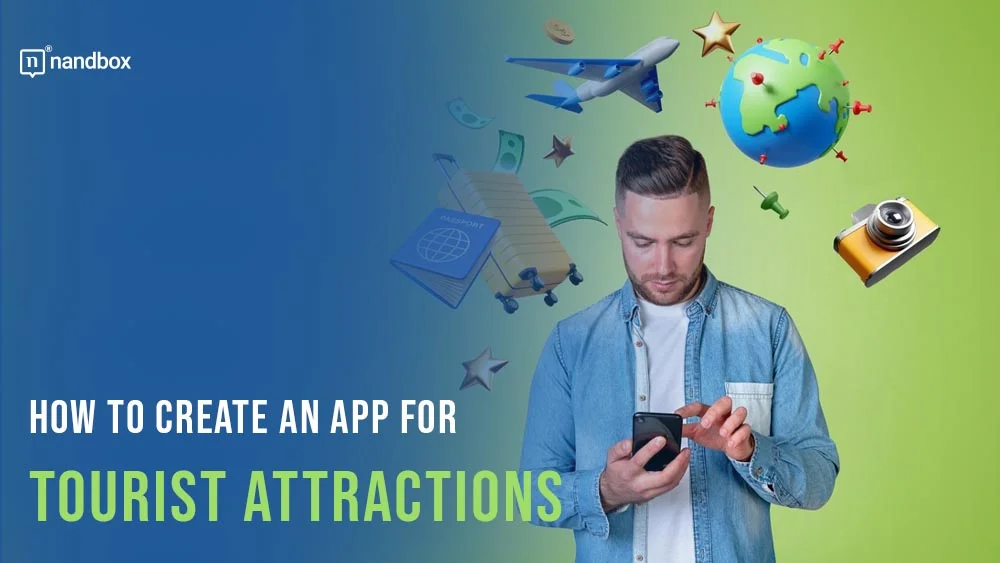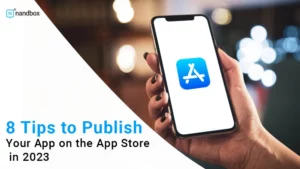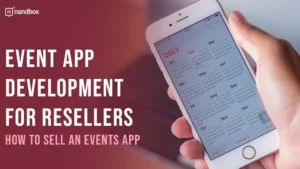Do you want to build a tourism attraction app? This all-inclusive guide will show you the ropes. Additionally, we will provide you with detailed instructions and helpful hints to make your app a reality. Everything you need to know to make a successful app for tourist attractions is included in this little guide. Additionally, this guide is suitable for developers of all skill levels.
Ever think of a destination in the world where you’d like to chill and have a cup of coffee? I do that all the time. However, I always think of what can help me facilitate the whole process. An app is the first thing that comes to mind. If I have an app that’ll help me get to know all the famous and hidden gems at my desired destination, There are certain types of apps that appeal to tourists. That is because they help them travel and worry about nothing.
Some plan trips; others let you know what places to visit. Furthermore, there are tourist attractions that you can book trips to through an app. Overall, what I’m trying to say is that an app for tourist attractions can be a great idea if you wish to develop one. Our guide will show you exactly why and how to create an app for tourist attractions in a very easy way.
Define Your App’s Purpose and Target Audience
This is the very first step you should be taking. Simply put, knowing who you are designing the app for helps you achieve wonders! It is crucial to determine the app’s objective as well as its intended users before beginning the process of developing an app for tourist attractions. Which problem does your software intend to tackle for vacationers?
What precisely will it be capable of in terms of its features and functions? If you are able to define the objective of your app, you will be able to separate it from other applications that do the same function that are currently available on the market.
In addition, by determining your app’s target audience, you’ll be able to modify the layout, the content, and the marketing methods of your app so that it is more likely to attract and keep the attention of those users. For the purpose of informing your decisions and ensuring that your app satisfies the requirements and preferences of the target audience, it is important to conduct market research, examine the apps of your competitors, and collect feedback from potential users.
Research and Gather Information About Popular Tourist Attractions
Before you develop an app, there’s a certain amount of research that you are obligated to do. Gather information about different places all around the world in order to give the right instructions to your app’s users. You will gain a better understanding of the types of attractions that tourists are interested in. As well as the precise features and functions that your app ought to provide as a result of doing this. There are several ways or methods that you can use to gain information. Like:
- Traveling to well-known tourist spots.
- Reading travel blogs and reviews.
- Having conversations with representatives of local tourism organizations or agencies.
These are all great ways to gain information and firsthand accounts of the attractions that are most frequently frequented and come highly recommended by travelers. Not only will you be able to construct a complete database of attractions for your app with the help of this information, but you will also be able to provide accurate and up-to-date information to the people who use your app. Additionally, if you want to improve the reliability and authenticity of your app, you should think about adding user-generated content and reviews.
Design a User-Friendly Interface and Navigation System
When developing an app for tourism attractions, putting emphasis on the quality of the user experience should be a top priority. Create a graphical user interface that is simple to understand and straightforward to navigate. Take into account the requirements and preferences of the audience you are trying to reach. Additionally, work to make the application both visually appealing and interesting to use. You can add interactive designs to your app. This will show how much great UX you have in your app.
Make sure that the labels and icons that you use to direct users around the app are easy to understand. Also, ensure that you enable smooth navigation between the various areas and functions. It is important to put the mobile application through its paces with a wide range of users so that feedback can be gathered and any necessary adjustments can be made. Keep in mind that having an interface and navigation system that are user-friendly will improve the overall user experience and encourage consumers to continue using your program.
Focusing on such simple details will help you achieve a high rate of customer satisfaction, which is why we’re actually highlighting how crucial this is.
Develop Essential Features Such as Maps, GPS, and Ticket Booking
If you’re familiar with Booking.com, you’ll understand how efficient this step is. That is, of course, if you’re aiming to make a copycat of this giant booking app. It is necessary to incorporate essential features such as maps, GPS, and ticket booking when developing an app for a tourist attraction. Because of these features, the user experience will be improved, and it will be simpler for travelers to navigate and investigate a variety of attractions.
Include a map function that not only indicates the location of various tourist places but also offers users directions to assist them in finding their way around. Integrate the GPS capability in order to deliver real-time location tracking as well as personalized recommendations based on the user’s current location. Include a function that allows customers to order tickets directly through the app, which will save them time and effort as well as money.
You will be able to develop an app that is both comprehensive and simple to use if you incorporate these necessary characteristics. This app will be appealing to users and will encourage them to stay.
Don’t Forget to Add Content to Your App for Tourist Attractions!

Content creation is the art of luring people or users to read whatever you write. This happens through the magical skill of altering words and using them in a nice and decorated way in order to sell your services correctly. However, if you don’t have an app that will have a blog (which could be a plus if you implement a travel blog in your app), you needn’t worry much about your content. All you need to do is name your menus—sides and mains, of course.
Additionally, create categories where you will write the information sections regarding certain places. Start pinning those categories with names that are clear and will help your users through their app navigation process. Here are some examples of category names:
- Historical Places
- Public Parks
- Cafes
- Hidden Gems
- Cinemas
Test and Release Your App for Tourist Attractions
Your app for tourist attractions is now ready! But before releasing it to the public, you must run a number of tests to make sure everything is functioning as you intended. You must test the app on all platforms it will be available on, using various operating systems and web browsers. To perform first quality assurance tests on your app, nandbox, our native no-code app builder offers a test your app option. However, the best approach to testing your app is to use its ad-hoc or APK version, which is the actual file that will be uploaded to stores and can be downloaded and used on a device. There are further alternatives: Apple offers a specific tool called TestFlight for native iOS apps. It enables you to test your app before publishing it to the App Store. Testflight’s equivalents are available for Android.
Starting with the necessary step of enrolling as a developer on both the Android and iOS platforms, launching an app can be a difficult and rather overwhelming procedure. A developer account with Apple costs $99 a year. A $25 one-time fee is required to open a Google Publisher account. If you publish numerous iOS apps for various projects, each one will require its own unique developer account since Apple demands that the owner of the content in the app match the owner of the developer account.
Final Thoughts!
Creating an app empowers your business in this digital era. Applications are actually said to be used more than websites by 2025. That is why it is necessary that you develop yours if you want to take your business to the next level. I know that hiring developers to develop or create an app for you can be a great cost in terms of money, time, and effort. That is why I come to you today with a little swish from Dumbledore’s wand. My magical solution for you is nandbox’s native no-code app builder.
nandbox can help you create your own native app by yourself in literally minutes. This is because we rely on a simple drag-and-drop interface. You have the option to easily add your desired features and modules. Moreover, you’re provided with pre-made templates that you can customize easily. Additionally, upon signing up, you will be provided with a 14-day free trial. This trial will help you familiarize yourself with our app builder’s modules, features, and configuration settings. Sign up now and build your app with nandbox for a fraction of the cost!







